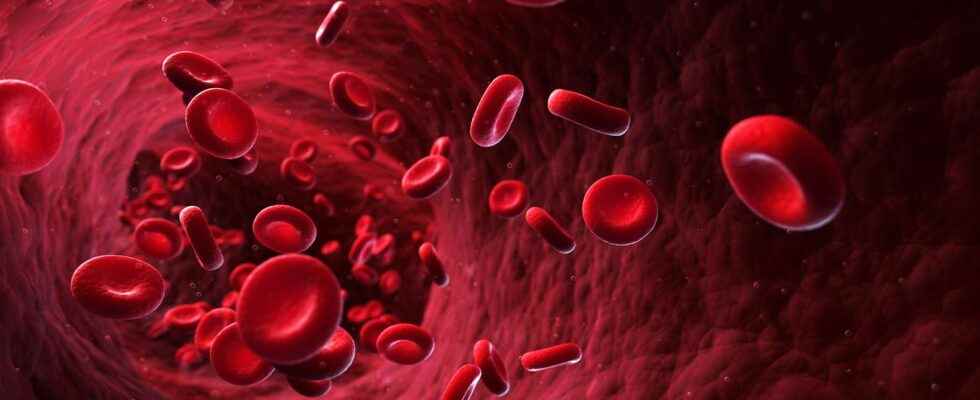Hematocrit refers to the proportion of red blood cells in the blood. Too high or too low can be a sign of a health problem. But the hematocrit is also used to identify athletes who have resorted to doping to raise their red blood cell count.
You will also be interested
[EN VIDÉO] The flow of red blood cells in real time The photoacoustic flowoxigraphy technique makes it possible to observe in real time the red blood cells moving in a blood capillary. It is then possible to determine the quantity of oxygen present in each blood cell and in a capillary.
L’hematocrit refers to the proportion of red blood cells contained in the blood compared to the volume whole blood. Made during a blood count, the hematocrit is generally expressed as a percentage.
Measurement of the hematocrit level
To measure the hematocrit, it was sufficient to centrifuge a sample of blood in a test tube or a capillary tube, and measure the relative height of the pellet composed of red blood cells. Currently, there are electronic devices capable of determining the hematocrit level from the number of Red cells and their cell volume.
The hematocrit varies from person to person. It is normally between 35 and 55%, but its value depends on gender and age. For example, the hematocrit is generally between 40 and 50% for men and between 37 and 46% for women. In newborns, the hematocrit is higher.
The hematocrit level is a reflection of health
We measure the hematocrit level to get an idea of the patient’s health:
- A high hematocrit level may mean an excessive production of blood cells after taking doping substances. For example, taking erythropoietin (EPO) increases the amount of red blood cells. But a high hematocrit can also be a sign of dehydration, characterized by water loss from the body. plasma blood, or a pathology : cancer or disease affecting the heart or bone marrow.
- Conversely, a low hematocrit level may be due to anemia (lack of iron) or bleeding.
Hematocrit and sport
For athletes, a high hematocrit can mean better health physical because the more red blood cells in the blood, the more oxygen it can supply to the muscles. But too high a hematocrit can also have harmful consequences: if the blood contains more red blood cells, it will be more viscous and will have more difficulty in circulating in small blood vessels, hence a risk of thrombosis and D’Stroke.
In the cycling, to avoid the doping, hematocrit tests are performed on athletes. Cyclists with too high a hematocrit level (eg greater than 50%) risk exclusion from competitions. Besides theEPO, there is also doping by transfusion, either with blood taken previously from the athlete and then reinjected, or with blood from a donor. Blood doping, by transfusion or by other methods, is prohibited by international regulations during and outside competitions.
Interested in what you just read?
Subscribe to the newsletter The health question of the week : our answer to a question you ask yourself (more or less secretly). All our newsletters
.
fs7
